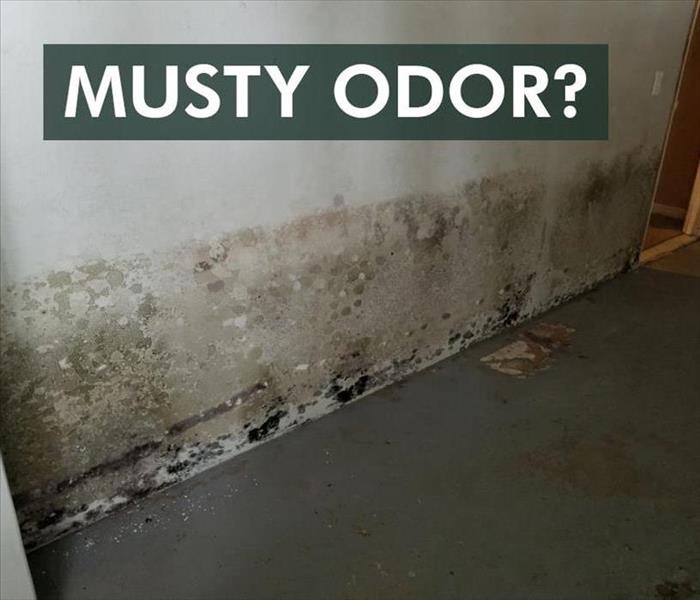Finally, An Explanation for Why Mold Smells Musty
7/24/2019 (Permalink)
One of the first indicators of mold growth that any building owner or occupant gets is the smell. If you've been around mold before — which, chances are, you have — then you know that mold has a musty odor. But why is this? The simple answer: Mycotoxin components.
When mold eats, grows and reproduces, it releases Microbial Volatile Organic Components. The mold releases a mixture of these chemicals as it grows, much like animals release gasses as they eat and develop. In fact, at the risk of sounding immature, many industry professionals refer to these gasses as "mold farts."
How To Identify Mold
So, you detect a musty smell, but how can you tell if it's mold? Generally, the smell of mold is unpleasant, with many likening it to the following:
- A wet towel
- Wet socks
- Rotten wood
- Deteriorating paper
Of course, the particular smell of the growth in your building will vary depending on the type of fungus present. Every mold releases a unique mycotoxin mixture. Some mixtures has a more acetone-based odor, while others exude a camphor-like smell. Other terms commonly used to describe certain molds include nutty, herbaceous or even fatty. One type of MVOC releases an odor that smells very similar to fermenting alcohol.
What To Do When You Smell Mold
If you do detect a musty odor in your building, the best thing you can do is contact a Jenks, OK, mold remediation specialist. In the meantime, run a HEPA air filtration device to rid the environment of excess moisture and to remove any mycotoxin components. Doing this can help restore your air quality and ensure you and other building occupants don't have to live with the musty smell. When your mold remediation team arrives, it will assess the damage, eliminate the growth and begin to restore both your building and damaged belongings. As an added bonus, the dirty sock smell will be gone for good.



 24/7 Emergency Service
24/7 Emergency Service
